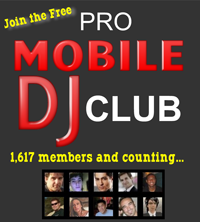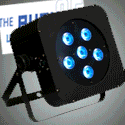By Stacy Zemon, Publisher & Chief Scribe
Automating every aspect of your DJ business is a time-consuming and daunting task — and, well worth it because ultimately it is the most time-saving action you can take for your company’s future.
Once it’s automated, your business can “run itself” to a certain degree, allowing you to concentrate on marketing and sales, improve existing processes, work on new product development, and take a “real” vacation!
What Does “Automating Your Business” Mean?
It means having policies and procedures for handling the various tasks that occur in your business on a day-to-day basis. These should be documented in a Business Operations Manual that can be easily understood by your current and future employees. Automating your business should also include using client management software such as DJ Intelligence or DJ Event Planner.
The reason that so many franchises succeed is because they have a manual and training program that allows virtually anyone to learn their internal processes and deliver a consistently good product or service. Everything you need to know to run that particular business, from hiring employees to marketing, sales, and training is written down in the manual.
In our industry, I recommend using the book, “Running Your Multi-Op” by Mike Walter or his DVD series, “Training Your Next Great DJ” as the foundation for your training program.
Even if you never intend to expand to becoming a multi-op or opening other locations, a Business Operations Manual for your company can help you do several things:
- Easier management and growth; you can focus on perfecting your product or services and processes while employees do the day-to-day tasks.
- Hire staff with relatively little experience, they simply follow the tasks outlined in your “Business Operations Manual.”
- Focus on marketing and sales.
- Focus on “Big Picture” things instead of being overwhelmed by repetitive daily tasks.
- Have more free time for family and friends.
Writing a Business Operations Manual
Having your business “written down” will position you to grow. By having an operations manual full of your mobile entertainment company’s system, you are one step closer to having a business that can easily scale up.
When you hire a new person, you will be able to provide them with a roadmap for their job, rather than having to spend lots of time with them trying to transfer your knowledge into their brain. Transference doesn’t work in training. Transcription does (especially when there are also videos to watch).
Writing down the systems also helps by showing you how you can become more efficient. Work with your people (and yourself) to write down everything you do for each task. In the process, look for ways that you can cut steps and save time. If you have enough employees, do workshops for each task to try to find ways to make it more efficient.
Creating an operations manual out of thin air is a difficult task, so where do you begin? I suggest that you break your operations manual into many individual checklists. Each checklist should pertain to a specific task. Try to use less than a page for each checklist. If its too long, break it down into several checklists.
Checklists & Getting Help
Your checklists should be simple and easy to follow. The goal is to provide step-by-step instructions for each of your businesses tasks. For more complicated tasks, you may need to add notes or training materials to go along with the checklist. The checklist should be for day to day use.
You can create a checklist operations manual internally. However, you may not have the time to write down a checklist for every single task. It might be more time and cost effective to hire someone to come in and write your checklists for you. Before you do, get the formatting the way you like it first. Create a checklist for that person to follow when writing checklists.
Once you know exactly what you want accomplished, you can hire someone temporarily to do the job. Alternatively, you can task one of your employees to do it. Just free up their time so they can focus on writing the checklist operations manual until it is done.
You can also hire someone for this stage because all you are doing is recording what is already being done. The recorder should be able to sit with each employee and go over his or her various tasks one by one. You may want to have your employees start notebooks with a list of all of the things that they do. Let them record their list of tasks for a month before you have someone come in and start recording. That way, you will be sure not to miss anything, even the once in awhile tasks.
You are going to want to organize the operations manual into job description categories. Each employee should receive a focused operations manual that has checklists for each of their tasks. Everyone doesn’t need the big master operations manual. Encourage your employees to refer to their operations manual when performing their tasks. Its true that many of the tasks will be memorized, and that is fine. But some tasks are complex and it is nice to have a step by step process to follow.
You are not quite done yet. You need to spend time with each of the checklists. Bring in some employees and go over each checklist. Is it accurate? Can it become more efficient? Could a new person understand and follow it? Refine your checklists until they become simple, efficient, and easy to follow.
When you want to change a task or add a new task, do it via the operations manual. Come up with the checklist first, then do the training. The employee will then have their operations manual to fall back on until they have mastered the new task. Just understand that as they do the checklist, they may be able to suggest tweaks. Always be flexible. The nice thing about these checklists is that they are very easy to change.
Getting an operations manual for your business is pretty easy if you follow my advice for checklists. This is what I use in my own business. The checklists can be compiled quickly and when you have them, they are easy to follow. Don’t hide important information in dense paragraphs of a never looked at operations manual. Bring them to life by keeping instructions simple and visually appealing in a checklist format. That way, employees can mentally check the individual tasks off as they move through their job.
Sample Business Operations Manual Outline
POLICIES AND PROCEDURES:
- Introduction and Mission Statement
- Employee and/or Independent Contractor Information (protocol, contact #’s, etc.)
- Products & Services Descriptions
- Equipment Handling & Maintenance
- Daily Operations
- Human Resources (hiring/firing, vacations, overtime, payroll, etc.)
- Sales
- Customer Service
- Advertising and Marketing
- Safety & Security
- Legal Matters
There’s no use in creating a Business Operations Manual if you don’t use and maintain it properly. Make sure to update any changes in policy, processes or procedures immediately in your manual.
Also, continually work on simplifying and refining your manual to make it as easy as possible to understand: group similar topics together, color-code different sections, integrate procedures from computer software, fax machines, etc.
Lastly, it is VERY important to be aware that if your DJs are independent contractors and not employees, you are very limited in what you can ask them to do. Get to know the laws around this subject, and good luck!









